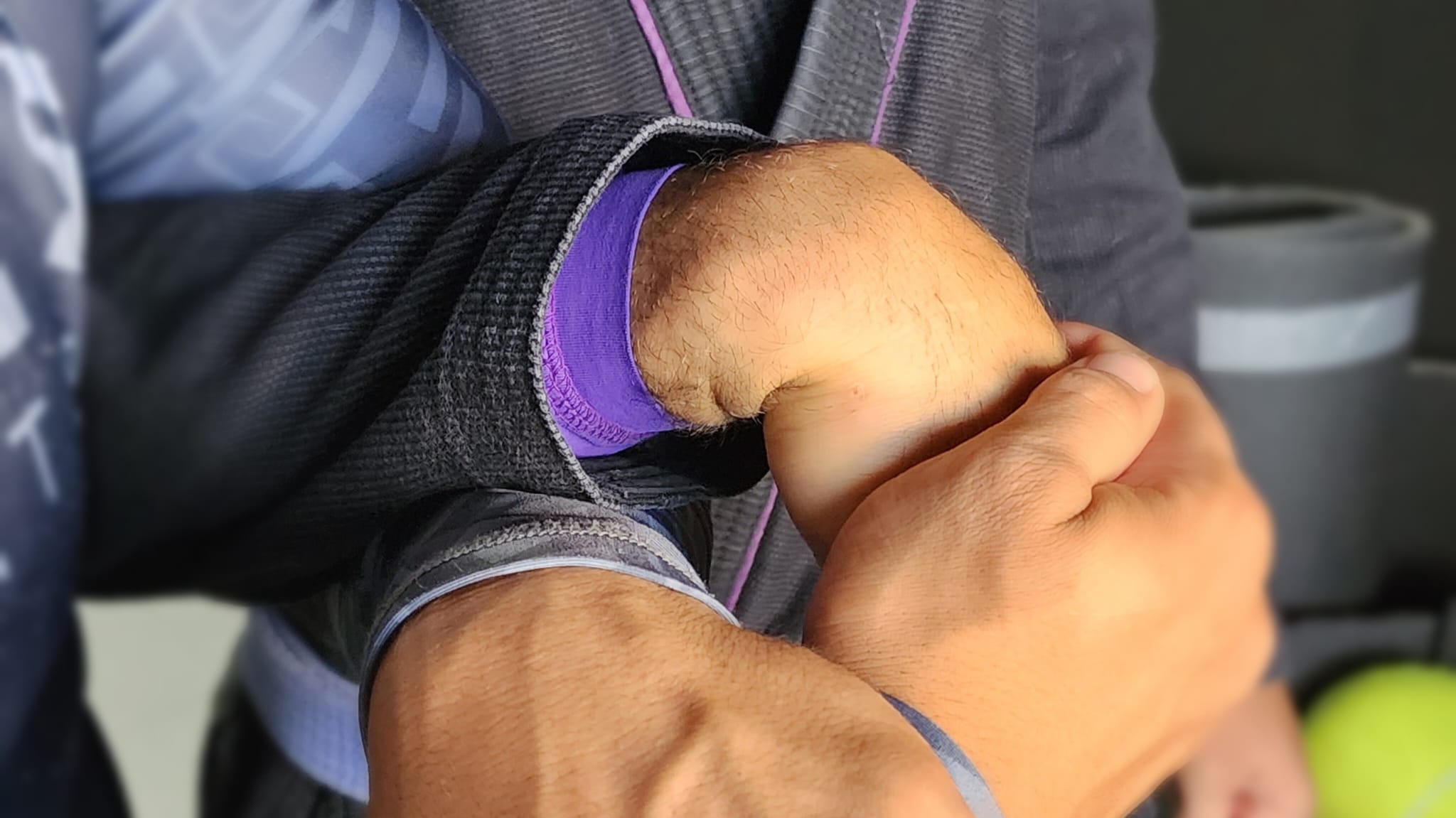“Mão de vaca” means “cow paw” or “cow hand” (with “cow paw” being the preferred translation), and it’s a Portuguese term used to refer to a wrist lock. It’s typically executed by grabbing the opponent’s hand—whether it’s the palm, back of the hand, or even the fingers—and then bending and/or twisting it. One rule that applies to this technique is that the elbow joint must be either fully extended or bent.
This lock is generally considered dangerous and is sometimes avoided by martial artists due to the limited time the recipient has to tap before experiencing actual harm. In competitive scenarios, it’s applied suddenly and forcefully. “Mão de vaca” has the potential to result in ligament tears, dislocations, or even bone fractures. Additionally, this submission can be used not only to elicit a tap but also to divert the opponent’s attention, thus aiding in advancing one’s position in a fight.
Wrist locks find widespread use in self-defense situations as methods for inducing pain compliance or escaping from grips. Despite being largely overlooked by MMA fighters due to the presence of gloves and wristbands, and its rarity in Nogi competitions, this potent lock should not be disregarded or underestimated.
If you’re considering embarking on your Brazilian Jiu-Jitsu journey, rest assured that our Knots Jiu-Jitsu Program does not permit the use of “mão de vaca” for white belts. Instead, this technique is introduced at the next belt level (blue), ensuring a safe and gradual learning progression.

